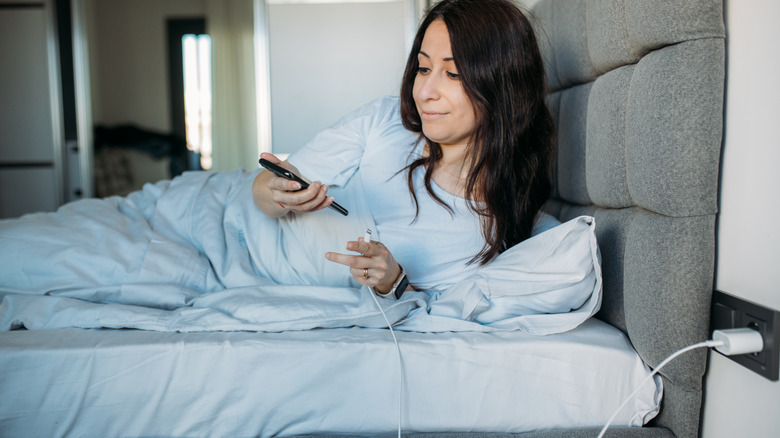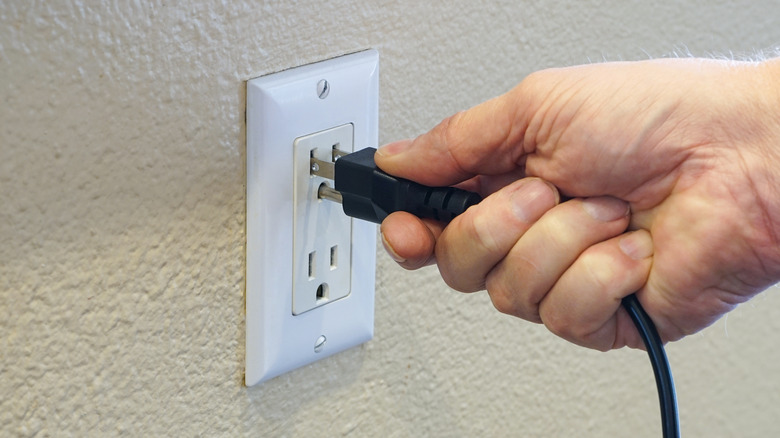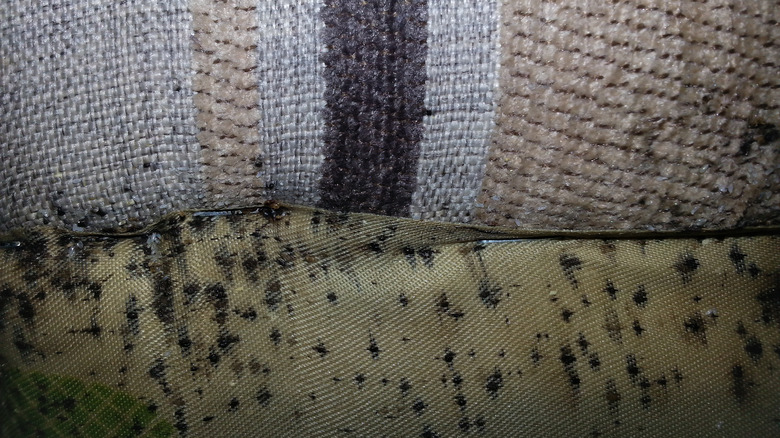The Sneaky Place You're Forgetting To Check For Bed Bugs
You might think that bed bugs are aptly named as they tend to hide out quite often in beds and bedding, and bite people when they are sleeping. However, bed bugs may go unnoticed in various places in the home where they hide out until it's feeding time. One sneaky place they hide in is electrical outlets.
Bed bugs are small, parasitic insects that feed on the blood of humans and other animals. They are most active at night and can hide in a variety of places in a home, including mattresses, box springs, and clothing. Bed bugs are often found in the seams of mattresses and box springs, as well as in the cracks and crevices of the bed frame.
Yet bed bugs can also be found in other furniture, such as couches, chairs, and dressers. They may also hide behind headboards, under cushions, and in between drawers, as well as cracks and crevices in walls and floors, and behind wallpaper and baseboards.
Why bed bugs like electrical outlets
Electrical outlets might seem like odd places for these pests to hide in, but bed bugs like them for a few reasons. Electrical outlets can provide a warm environment for these pests. This is especially attractive to bed bugs during the winter months when they are less active and need to stay warm.
Also, electrical outlets provide a safe and secluded place for bed bugs. The small cracks and crevices around the outlets are perfect for bed bugs to squeeze into and hide from predators. The outlets also provide close proximity to food since they are often located near beds, which is where bed bugs feed on human blood. This makes it easy for bed bugs to crawl out of their hiding places and feed without being detected.
In addition, bed bugs are attracted to carbon dioxide, which is a gas that humans exhale. With electrical outlets often located near beds, bed bugs are likely to be drawn to the area by the carbon dioxide that humans exhale while they sleep.
Look for these signs of bed bugs
You may see bed bugs crawling into electrical outlets or find them or their dirt by removing the plate. However, in many cases, the first sign of bed bugs may be waking up with itchy bites. Bed bug bites are often red, itchy, and raised. You may also notice small, rusty-colored blood spots or see fecal matter left behind. Bed bug fecal spots are black or brown. You might also find bed bug eggshells, which are white and about the size of a pinhead.
Be careful about bringing secondhand furniture into your home, as bed bugs may be living in it. Wash your bedding in hot water regularly, and vacuum your floors and furniture often. It's wise to inspect your home regularly for signs of bed bugs. If you find these pests in your electrical outlets or suspect bed bugs might be there, it's best to call a professional. It's difficult to gauge how many are in there or how far they invaded the outlets or the wall behind them. Getting rid of bed bugs can be difficult on your own, and professional treatment is often necessary.


